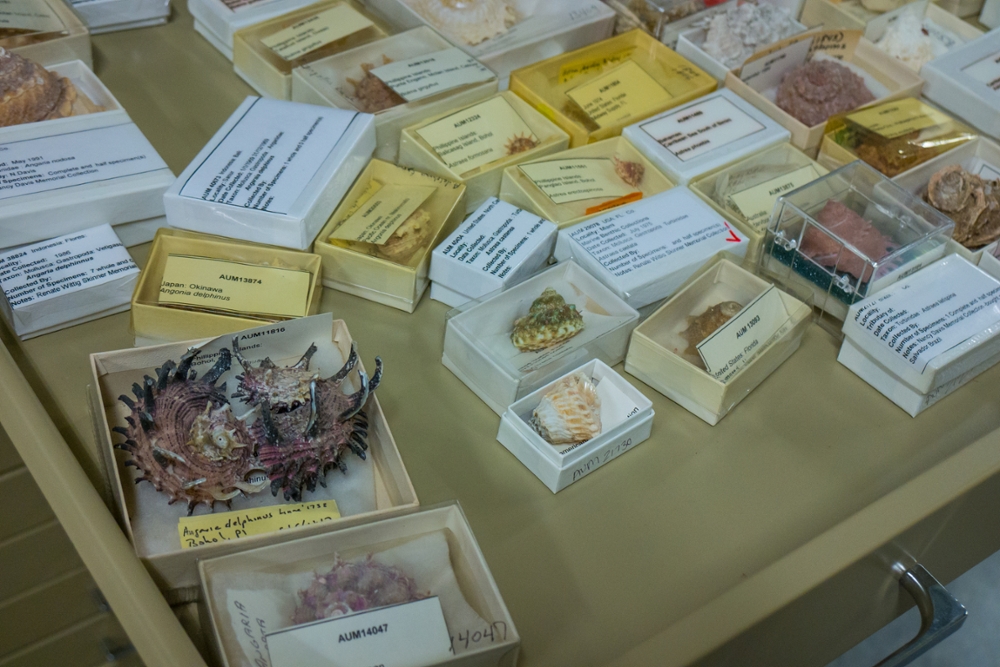COSAM News Articles 2019 November Museum of Natural History Represents ‘Snapshot in Time’ through Collections
Museum of Natural History Represents ‘Snapshot in Time’ through Collections
The Auburn University Museum of Natural History provides what museum director Dr. Jonathan Armbruster describes as a “snapshot in time.” Through their collections, natural history museums like the Museum of Natural History provide access to specimens that are integral to studying and understanding Earth’s biodiversity.
The museum, which is part of the Auburn University College of Sciences and Mathematics (COSAM), is made up of millions of specimen, each categorized in the museum’s nine collection categories: Amphibians and Reptiles, Aquatic and Marine Invertebrates, Arachnids and Myriapods, Birds, Fishes, Mammals, Plants, Vertebrate Paleontology, and Entomology.
“A collection is like a library, but the difference is you can reprint a book,” Dr. Armbruster said. “Maybe it’s not the cool and first original volume of it, but all the information is still there. Nature is constantly changing, it’s changing by itself and we’re obviously changing dramatically as well. So, these organisms represent a snapshot in time, so they may preserve within them chemicals that we’ve put out into the water or into the air or who knows what other information. So, you can actually trace what has happened to these organisms over time.”
The collections are constantly growing, with the fish collection currently containing the most specimen at around three quarters of a million. A curator is assigned to each collection and conducts the research and builds the database for their collection.
In general, faculty and students contribute to the museum collection through their research. Dr. Stephen Dobson, curator at large for the Museum of Natural History, said the museum and the specimens it contains serve many important functions.
“These include historical records of species diversity, distributions and rough abundances,” Dr. Dobson said. “Museum specimens have been used in phylogenetic reconstruction, population genetics, biomechanics, and in general evolutionary biology.”
Dr. Armbruster added that the Museum of Natural History is an important part of COSAM because of its support of the college’s research mission.
“When people do studies, they’re going to have to save the specimen just in case there is any question about them later on and,” he said. “We house those specimens for that research.”
He added that the museum is also involved in numerous areas of outreach and teaching.
“We try to hit the three big aspects of university life – teaching, research and outreach,” he said.
Check back as we will soon dive deeper into each collection of the Auburn University Museum of Natural History.
Latest Headlines
-
07/09/2024
-
Summer Bridge Program celebrates 21 incoming Auburn students as they prepare for future STEM careers07/02/2024
-
07/02/2024
-
06/17/2024
-
06/07/2024




